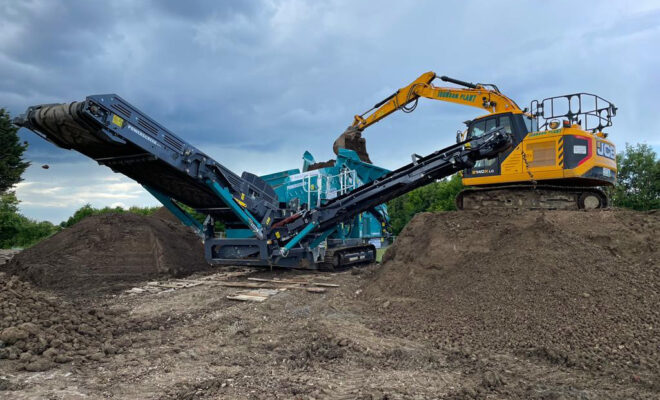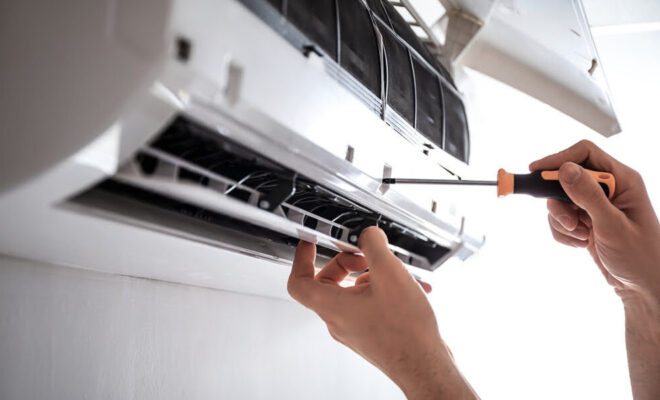Types of Rock Screens and Their Applications

In industries like construction, mining, and aggregate production, rock screens play a vital role in sorting materials of different sizes. Rock screens help sift through various types of rocks and aggregates to separate smaller particles from larger ones. This allows businesses to create the appropriate materials for specific applications, ensuring that the final product meets quality standards. If you’re on the lookout for a rock screen for sale, it’s important to understand the different types available and how they can best be applied in your specific industry.
What is a Rock Screen?
A rock screen, sometimes called a rock separator or grizzly screen, is an industrial machine used to filter rocks, aggregates, and other materials by size. Rock screens allow smaller particles to fall through their mesh, leaving larger chunks on top, which are then processed further or discarded. They are an essential tool across many industries, especially those that deal with raw materials that need sorting or grading.
Some industries where rock screens are often used include:
- Construction: Sorting sand, gravel, and other aggregates for construction purposes.
- Mining: Filtering ore and valuable minerals from debris and unwanted material.
- Landscaping: Separating rocks and debris from soil for landscaping projects.
- Agriculture: Screening compost or soil for agricultural use.
Types of Rock Screens
There are several types of rock screens available, each with unique designs and applications. Below, we’ll explore the most common types and their respective uses.
1. Static Grizzly Screens
What is a Static Grizzly Screen?
A static grizzly screen is a stationary piece of equipment consisting of a grid of metal bars or rails. These bars are spaced apart, allowing smaller materials to pass through while larger rocks remain on top. Static grizzly screens are known for their durability and are commonly used as a primary screening device in heavy-duty industries like mining and quarries.
Applications:
- Mining Operations: Static grizzly screens are ideal for removing oversized rocks before crushing.
- Quarrying: They are used to filter large boulders and stones from finer materials.
- Construction: Grizzly screens help filter debris from usable aggregate materials.
Advantages:
- Low maintenance due to the absence of moving parts.
- Effective for separating large rocks and heavy debris.
2. Vibrating Screens
What is a Vibrating Screen?
Vibrating screens are dynamic screening machines that rely on vibration to separate materials by size. The screen vibrates at high speeds, allowing smaller particles to pass through while keeping larger materials on top. Vibrating screens are widely used in industries where precise material separation is critical.
Applications:
- Mining: Vibrating screens are used to sort crushed materials into various size categories.
- Construction: Ideal for separating sand, gravel, and other construction aggregates.
- Recycling: Commonly used to sift and sort recyclable materials like metals, plastics, and concrete.
Advantages:
- High sorting efficiency.
- Customizable mesh sizes to suit different material types.
- Effective for both dry and wet materials.
3. Trommel Screens
What is a Trommel Screen?
A trommel screen is a cylindrical screen that rotates to separate materials based on size. As the drum rotates, materials are tumbled inside, and smaller particles pass through the mesh while larger particles are discharged at the end of the drum.
Applications:
- Waste Management: Trommel screens are widely used in composting facilities and landfills to separate waste materials.
- Mining: For separating valuable minerals from rocks and debris.
- Landscaping: Used to screen soil, sand, and compost.
Advantages:
- Suitable for screening a variety of materials, including moist or sticky substances.
- High-capacity sorting.
- Effective for large-scale operations.
4. Inclined Screens
What is an Inclined Screen?
Inclined screens are mounted at an angle, allowing materials to move down the screen due to gravity. As materials pass over the screen, smaller particles fall through the mesh, and larger particles continue down to the next stage of processing. Inclined screens are a popular choice in aggregate production and mining.
Applications:
- Aggregate Production: Inclined screens are commonly used to sort aggregates like sand, gravel, and crushed stone.
- Mining: Used for sorting materials at various stages of the crushing process.
- Construction: Ideal for separating materials needed for concrete or asphalt production.
Advantages:
- Simple design and cost-effective.
- High processing capacity.
- Suitable for handling coarse and fine materials.
5. Horizontal Screens
What is a Horizontal Screen?
Horizontal screens differ from inclined screens in that they are positioned flat, with materials moving across the screen in a circular motion. These screens are primarily used for fine material screening and are highly efficient at separating small particles from larger ones.
Applications:
- Fine Material Separation: Horizontal screens are perfect for applications that require the precise separation of fine particles.
- Mining: Used to screen out fine particles during mineral processing.
- Sand and Gravel: Effective for sorting fine aggregates and sand.
Advantages:
- High precision for fine material separation.
- Can process large amounts of material efficiently.
- Versatile for both wet and dry materials.
Choosing the Right Rock Screen
Selecting the right rock screen for your project can significantly impact productivity and efficiency. Here are some factors to consider:
- Material Size: Determine the size of the rocks or particles you need to separate. For example, static grizzly screens are excellent for large rocks, while vibrating or horizontal screens are better suited for fine materials.
- Throughput Capacity: Assess how much material you need to process. For high-volume operations, vibrating or trommel screens might be the best choice.
- Material Type: Some screens handle sticky or moist materials better than others. For instance, vibrating screens work well with both dry and wet materials.
- Portability: If you need to move your screening equipment between job sites, consider a mobile rock screen option.
Finding the Right Rock Screen for Sale
If you’re in the market for a rock screen for sale, there are many manufacturers and distributors offering a wide range of equipment. Whether you need a static grizzly screen for mining operations or a vibrating screen for construction, choosing the right equipment will depend on your specific needs and the type of materials you’re working with.
When searching for a rock screen for sale, keep in mind the durability, ease of maintenance, and availability of spare parts. Investing in high-quality equipment can make a significant difference in the efficiency of your operation and reduce the need for frequent repairs or replacements.
Conclusion
Rock screens are an essential part of many industries, from mining to construction and waste management. Understanding the different types of rock screens—such as static grizzly screens, vibrating screens, trommel screens, inclined screens, and horizontal screens—will help you choose the right equipment for your project. Each type of rock screen has its unique features and benefits, so it’s important to assess your specific needs before making a purchase.
If you’re looking for a rock screen for sale, take into consideration the size of the materials you need to screen, the volume of material you’ll process, and whether you need portable or stationary equipment. With the right rock screen, you can enhance productivity, improve the quality of your final product, and streamline your operations for success.







